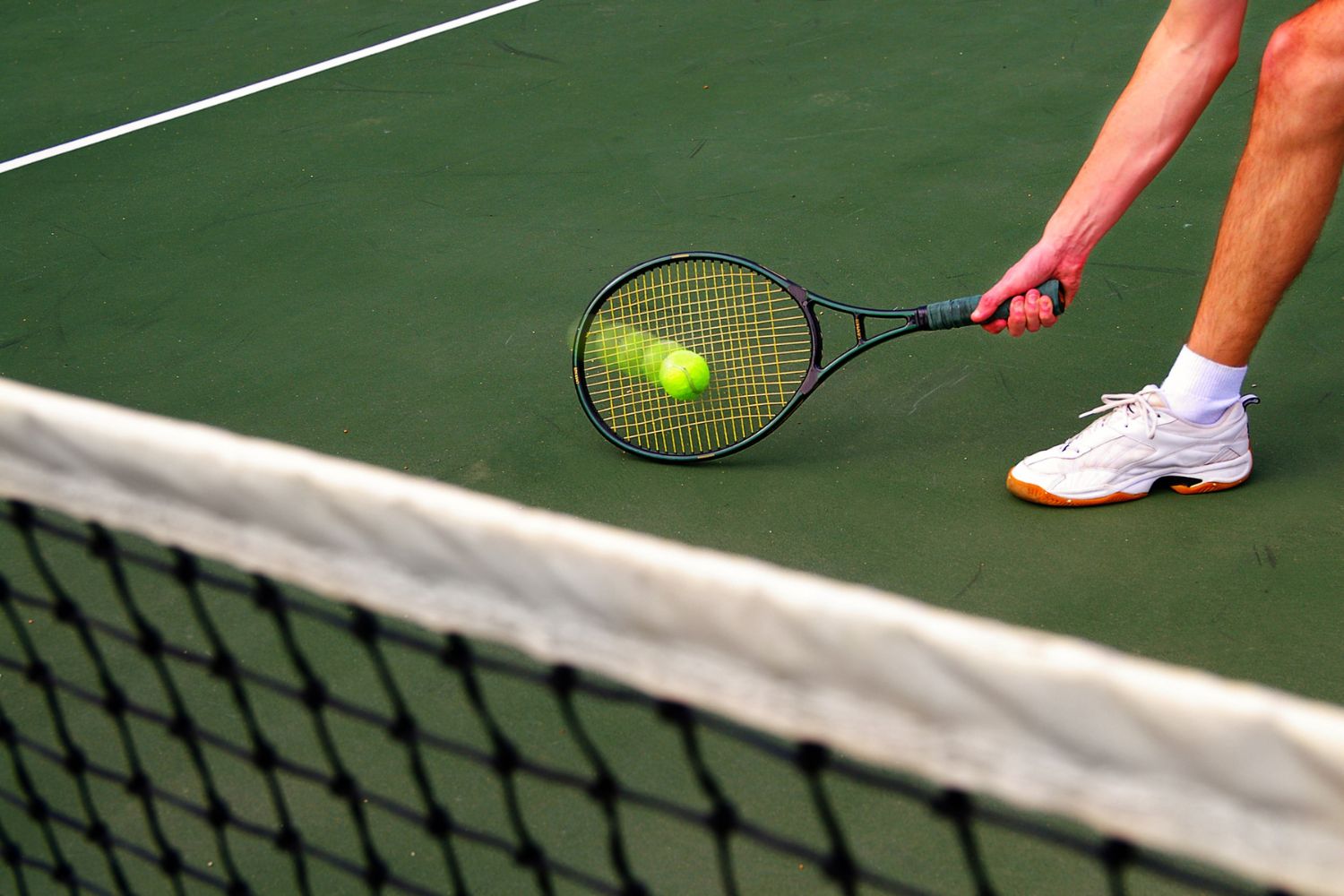- Tennis racket stiffness refers to the frame’s ability to bend when it comes in contact with the ball and is measured by tension rates.
- A higher rating score means that the frame is stiffer and less prone to bending, while a lower stiffness score signals a more flexible frame.
- Stiffer rackets generate more power but less control, while flexible rackets are low-powered but provide more control.
- Stiffer rackets tend to transmit harsh vibration and shock impact directly to the arm and wrist.
Buying a new racket can be very confusing when you are still a beginner at the game, and all the different numbers and specifications seem too much and confusing. Don’t worry; we’ve all been there at one point in the tennis journey, but everything gets easier once you get the hang of it.
One of the most important specifications you should be aware of is the tennis racket stiffness, which directly impacts the racket’s performance and comfort levels. Learning about this stuff will help you make the right choice next time you go shopping, depending on your skill levels and needs on the court.
Most importantly, it can spare a possible injury or other muscular damage to the arm. Yes, it is that serious, so let’s dive in!
What is Tennis Racket Stiffness?
You might be wondering what stiffness means in a tennis racket. Well, it’s simple.
Tennis racket stiffness refers to the frame’s ability to bend when it comes in contact with the ball.
At the specifications, you will always find the tennis racket’s flex rating expressed with a numeric value, which helps the player to make an educated choice when shopping or at least narrow down the options. The ratings can be anywhere between 40 being the lowest, to 85 being the highest.
The usual range, however, varies from 60 to 75, so it’s more likely to find something suitable in these numbers. Understanding the difference in the score helps players to evaluate the racket’s performance, even before trying it.
A higher rating score means that the frame is stiff and less prone to bending in contact with the ball. The vice-versa is true for lower stiffness scores, which signals a more flexible frame that bends frequently.
As a beginner, the difference between these numbers might not seem as impactful, but the more time you spend on the court, the more you’ll begin to grasp the importance of a tennis racket stiffness index. If you can, try to experiment before picking up your racket.
Soon you’ll realize that a 74 stiffness rate will make the racket feel like playing with a wooden board compared with a 62 rate, which feels very flexible and easier to manage. This will help you understand how those numbers that once looked encrypted translate into your overall performance on the tennis court.
How is Racket Stiffness (RA) Measured?
It would be great if we could measure a tennis racket’s stiffness by bending it on our knee or something, but unfortunately, that’s not possible unless you have some secret superpower. Merchandisers and brands have developed special machinery to measure stiffness in tennis rackets. That’s how all companies are able to evaluate the tension and put the score in the package to help buyers better understand how the racket will perform.
The most well-known and trusted tension-measuring machine is Babolat Racket Diagnostic Centre. Other brands like Gamma and Prince have their own machines, only less popular.
A machine can determine a racket’s stiffness in record timing; all you have to do is put the down handle and apply some light pressure on the head, causing the frame to flex. The rest of the calculations are entirely mechanical, as the machine prepares the racket’s analysis, otherwise known as RA measurements.
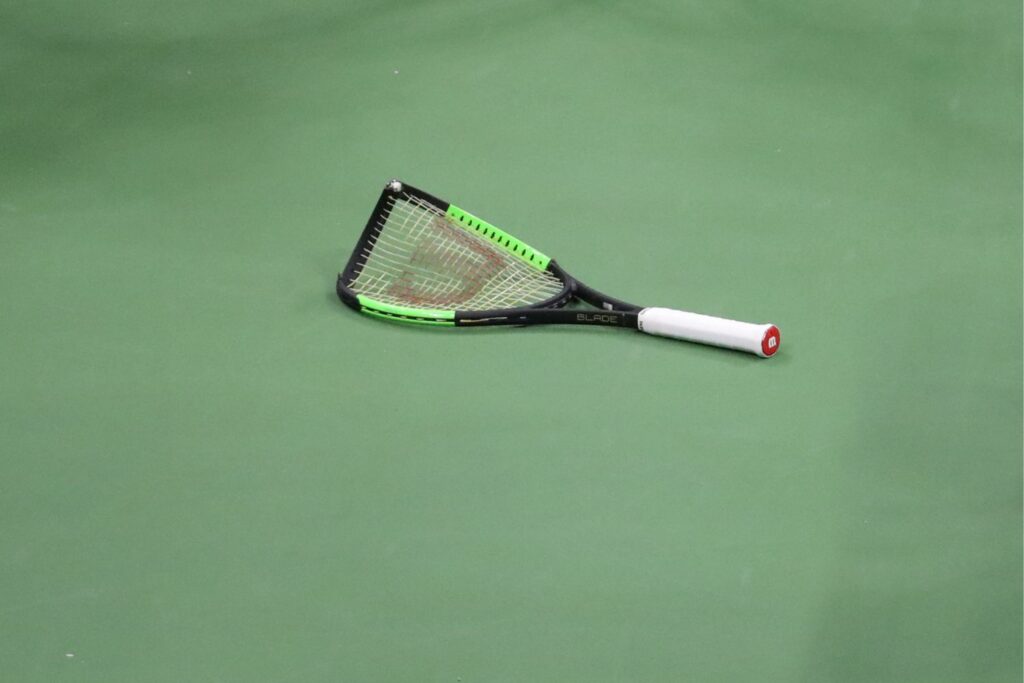
As explained above, a racket’s tension might be as low as 40 or as high as 85, but the usual range for the average player varies from 60 to 75.
This type of machinery is also useful for determining other important specifications, such as the racket’s weight, swingweight, and balance, in just a matter of minutes. However, the machine costs thousands of dollars, and because they are expensive, it’s not likely you’ll get easy access to one in your local club.
Therefore, when picking up a racket, you are totally dependable on the manufacturer or retailers, so it would be best to stick with trusted tennis racket brands that you can rely on.
The tension measurements in the industry are somewhat arbitrary, with the Babolat RDC machinery being the standard. The Wilson brand has come out with a new type of machine that refers to the tennis racket stiffness index as SI due to the different measuring processes. As a result, the numbers expression tension level might change, but this method is not widely accepted yet.
Especially if you are a beginner, we’ll suggest going for the Babolat standard tension index, just to be safe.
Tennis Racket Stiffness Rating Chart
If you are shopping for your very first tennis racket, it would be helpful to have a chart for tension measurements as a guide.
Here’s a simple tennis racket stiffness rating chart.
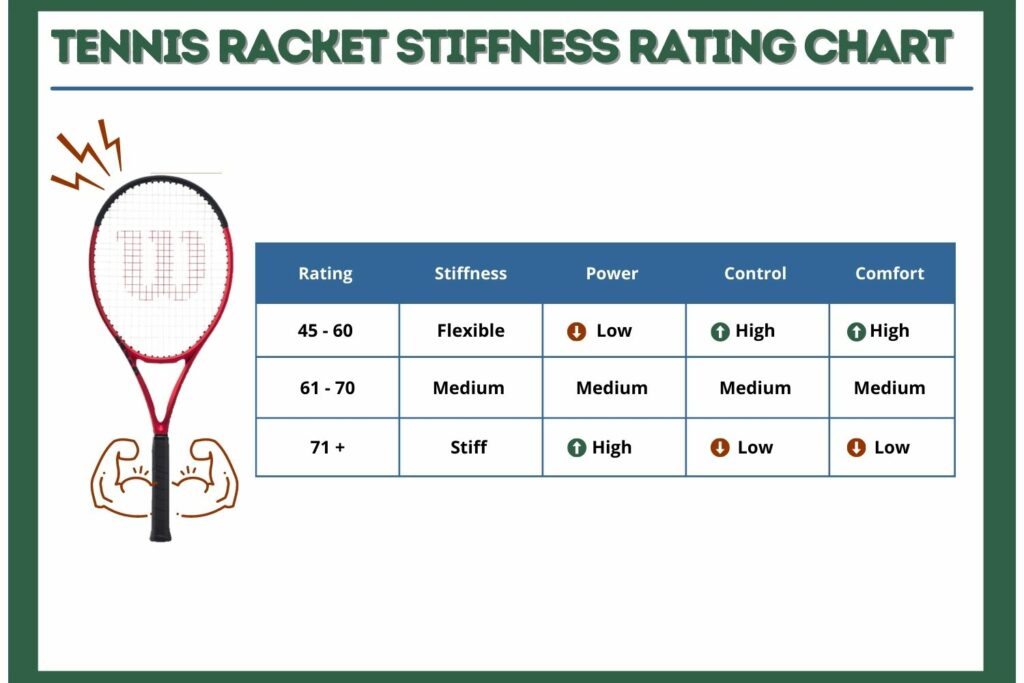
While the tension chart can be a valuable tool in evaluating a racket’s performance, other attributes such as tennis racket weight, balance, and grip also play an important role. It is important to consider all aspects of a racket before making a decision on its suitability for your game.
Power, spin, control, or comfort level might vary depending on the racket’s other specifications. However, you don’t have to stress much over this; as long as you stick within the range of each category, the differences in the tension rates would often go unnoticed or to the point that it won’t become overbearing and ruin your game.
The choice is also very personal, depending on your body mass, skill level, or game style. A racket that feels comfortable and will help you maximize perfomance for you might be stiff as a brick or annoyingly flexible to another player.
Racket Stiffness and Performance Impact
We mentioned that a tennis racket stiffness rating greatly impacts performance, but now it’s time to dive more in-depth to explain how. The attributes that are mostly affected are power, control, and comfort.
As you might already know, all three of them are very important features of a racket. That’s why we decided to analyze them separately, to make sure we go through every important detail, to simplify things even more.
Power
Most players look at the stiffness rate and assume that a flexible racket can generate a higher level of power, as it bends more when it comes in contact with the ball, allowing more dwell time and creating momentum. It sounds only logical, doesn’t it?
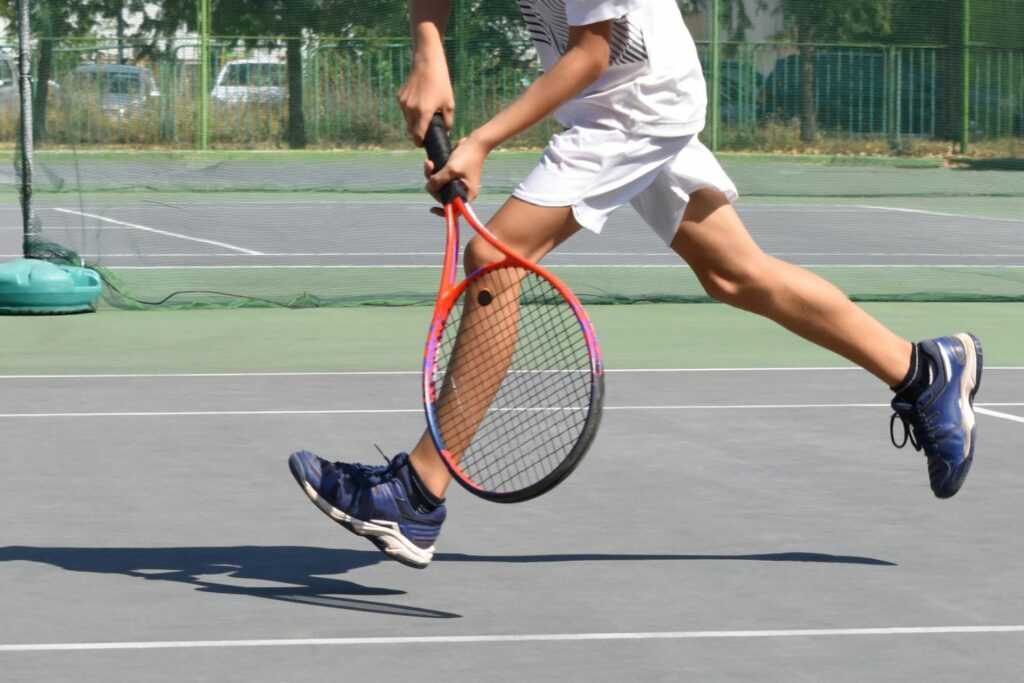
Wrong! This common misconception couldn’t be further from the truth. Since most beginners don’t bother to clear things up beforehand, they end up with the wrong type of tennis racket, making them spend a lot of energy generating power instead of focusing on learning the techniques.
The truth is that the ball stays in the stringbed a fraction of a second more than the frame itself needs to recover from the shock impact. As a result, the frame absorbs the energy accumulated while the shots lose power.
On the other hand, a stiffer racket with high tension rates allows less dwell time for the ball, and during swings, the frame’s bend is often insignificant. That’s why, even during full swings, the ball retains energy making the shots way more powerful.
Control
While the power effect has a scientific explanation, the same can not be said when about the control levels of a racket, determined by tension rates. In fact, the concept here is looser and dependable on the player’s perception and skill level.
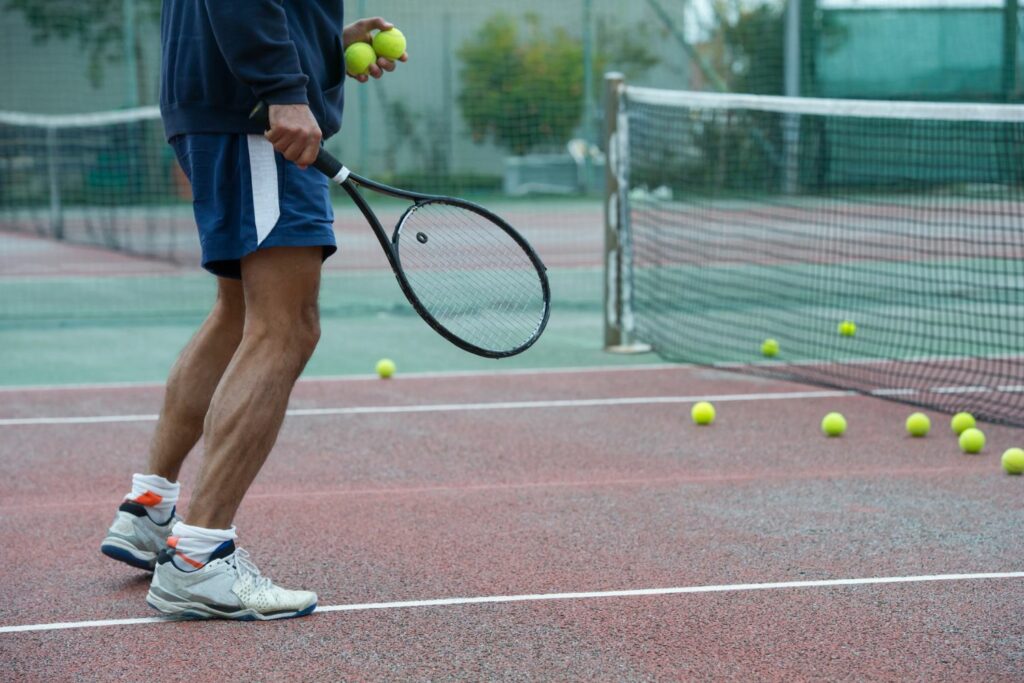
The general rule is that a stiffer frame generates more power, therefore, provides less control, while a flexible racket is low-powered, so it provides less control. However, switching to a flexible racket is not a quick fix for those players that want to be more dominant on the court and redirect the ball throughout the game. A fresh beginner can comfortably use a very flexible frame and still not be able to take any advantage of the racket’s control potential.
As you might have guessed by now, control is an earned skill of a player after years of proper training. A flexible frame will only enhance this feature, but it is you who has to hit targets with accuracy and control the ball’s trajectory shot.
What confuses most players is that stiffer rackets can also deliver good control, which is not what you’ll usually expect. However, a high-tension frame offers more stability and makes it easier to add depth to each shot or create a good rhythm and pace.
That’s why we say control is more often than not a perception because, even in this case, players feel like they can intentionally redirect the ball better than they would do with a flexible frame.
Touch also plays a role in this since stiffer rackets deliver a clean, crispy feel that increases the control perception for some players. Meanwhile, the flexible frames’ plush feeling helps players connect right away with the racket and have more control. Confusing? As we said, it is a matter of perception. The best way to find what suits you better is to get on the field and play.
Comfort
Comfort levels are also an area of personal perception since it directly correlates with how at ease the player is, but also skill levels and the body’s physical condition. If we would refer to simple logical reasoning, then a flexible racket, by default, would be more comfortable. Because the frame at lower tension bends more, it does better at energy transfer and absorbing harsh vibrations.
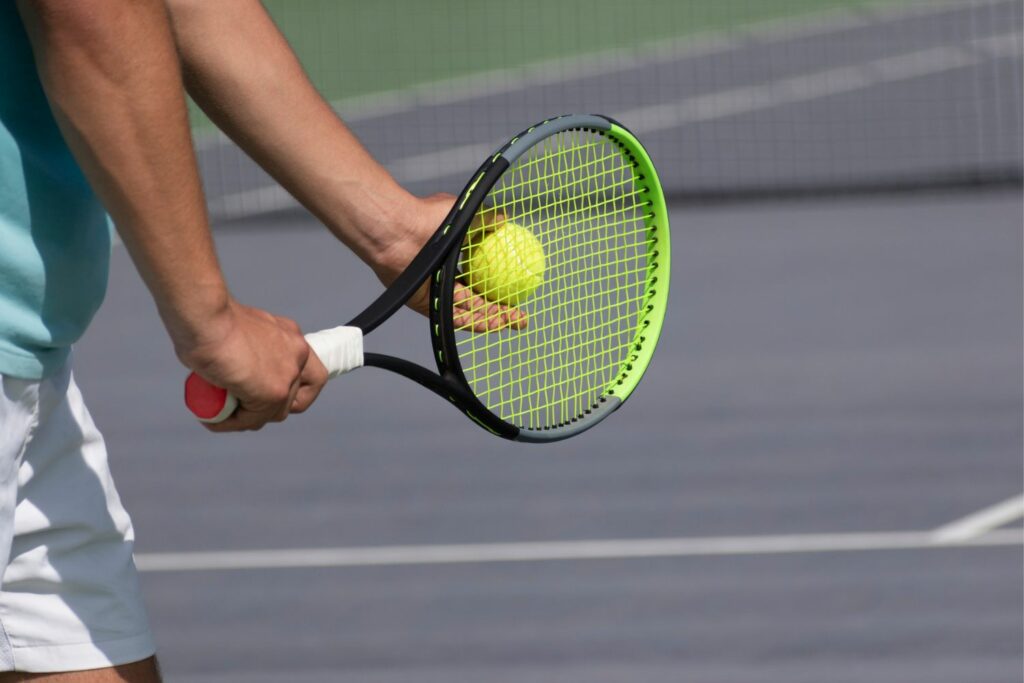
However, since the dwelling time is longer, the vibrations on a flexible racket last more. That’s why some players find them rather uncomfortable, especially those performing at advanced levels, who also have a problem with overbearing power levels.
On the other hand, stiffer frames tend to transmit harsh vibration and shock impact directly to the arm, wrist, and shoulder due to their construction. This can even be a leading cause of different injuries or developing tennis elbow conditions. However, the dwelling time is less when coming in contact with the ball, which makes the vibration feel smaller, and at a faster rate.
Many brands are now integrating groundbreaking technology, which helps to dampen the shock impacts and increase comfortability.
Safe to say, there is not a clear-cut answer. The type of tennis string you are using can also play a role in the racket’s response. Natural gut, for example, will feel incredibly soft and comfortable to play with, but kevlar strings will make the racket feel incredibly stiff. The only real measurement you should consider is how comfortable you feel on the court.
Do Stiff Racket Cause Tennis Elbow?
Tennis elbow is, unfortunately, widespread among players, caused by intensive and repetitive exercise motions. If left untreated, the tennis elbow condition can be extremely painful, leading to damage or even degeneration of the muscles around the elbow. Since this is a condition built over time, many blame stiffer rackets as a leading cause.

While this is not inherently wrong, a stiff frame is not the only one to blame. Often, players overlook other specifications that have a contributing role in tennis elbow syndromes. Here are a few of them;
- Weight. A heavyweight racket is harder to maneuver on the court, especially when reaching for those difficult angles. As a result, players tend to put more stress on their arms and wrist while trying to manage it. Also, this kind of racket tends to absorb shock impact and harsh vibrations more.
- The racket’s materials and construction. Different materials make the racket feel heavier than it actually is. That’s why it’s better to stick to lightweight materials, like graphite, that also tend to dampen shock and vibrations.
- Grip size. Pay attention to how the handle fits on your hand. A grip too small or too large for you puts unnecessary stress on the wrist while also tending to twist more.
- String type. Players choose certain string types to maximize control and spin, but in the same type, increase the frame stiffness. You should be mindful of what kind of string materials you choose, or at least try to mix them to dampen the stiffness feeling and harsh vibrations.
- Balance. if the racket’s weight is directed mostly to the head, it makes the frame feel heavier.
Stiffest and Most Flexible Tennis Rackets
With so many different brands on the market and new models being realized every now and then, choosing a good tennis racket might be impossible. Usually, the smartest thing to do is to stick to brands that can be trusted and always deliver high quality because they are very keen on protecting their image.
To help you narrow down your options, we made a short selection of the most flexible and stiff tennis rackets.
Here are our best stiff tennis rackets.
| Racket | Stiffness Rating |
| Dunlop CS 10.0 | 76 |
| 75 | |
| Volk V- Feel 9 | 74 |
| Wilson XP1 Racket | 73 |
| Tecnifibre TFlash 300 CES | 72 |
| Volk V - Sense 7 | 71 |
We also took it upon ourselves to research the best ultra flexible rackets on the market. We have personally tested most of these options, so make sure to take a look at our full reviews, as well.
Here are our best flexible tennis rackets
| Racket | Stiffness Rating |
| Wilson Triad XP5 | 46 |
| Prince Phantom Pro 100 | 54 |
| 54 | |
| Head MicroGel Radical OS | 56 |
| Head Gravity Tour Graphene + | 61 |
| 64 |
FAQs
Although you now know more about choosing the right tennis racket stiffness, you might still be looking for more information on how it impacts your game. Here are answers to some of the most frequently asked questions regarding tennis racket stiffness and flex.
Q: Can a racket’s stiffness be changed?
The stiffness of the racket cannot be changed, but it can be altered by string tension and material. A higher string tension will increase the stiffness, while a lower string tension will decrease it. The material of the strings also plays a role in affecting stiffness, as natural gut strings have more flexibility than polyester strings.
Q: How do stiffer rackets affect spin potential?
Stiffer rackets can typically generate more spin potential because they have a tighter string bed, allowing for better control and bite on the ball. However, there are other factors to consider as well, such as string type and tension, racket head size, and player technique.
Q: Why do pro tennis players not use dampeners?
Professional tennis players don’t use dampeners because they believe that the dampeners alter the sound and feel of the ball, making it harder to judge how hard they hit the ball and how much spin is on it. Dampeners also slow down the ball, making it easier for opponents to return.
Q: Is a stiffer racket better for power or control?
It depends on the player and their style of play. Generally, stiffer rackets offer more power and control because they have less flex, resulting in more energy being transferred to the ball. However, some players may prefer a flexible racket for its added power and forgiveness on off-center hits. Ultimately, it is up to personal preference and playing style.
